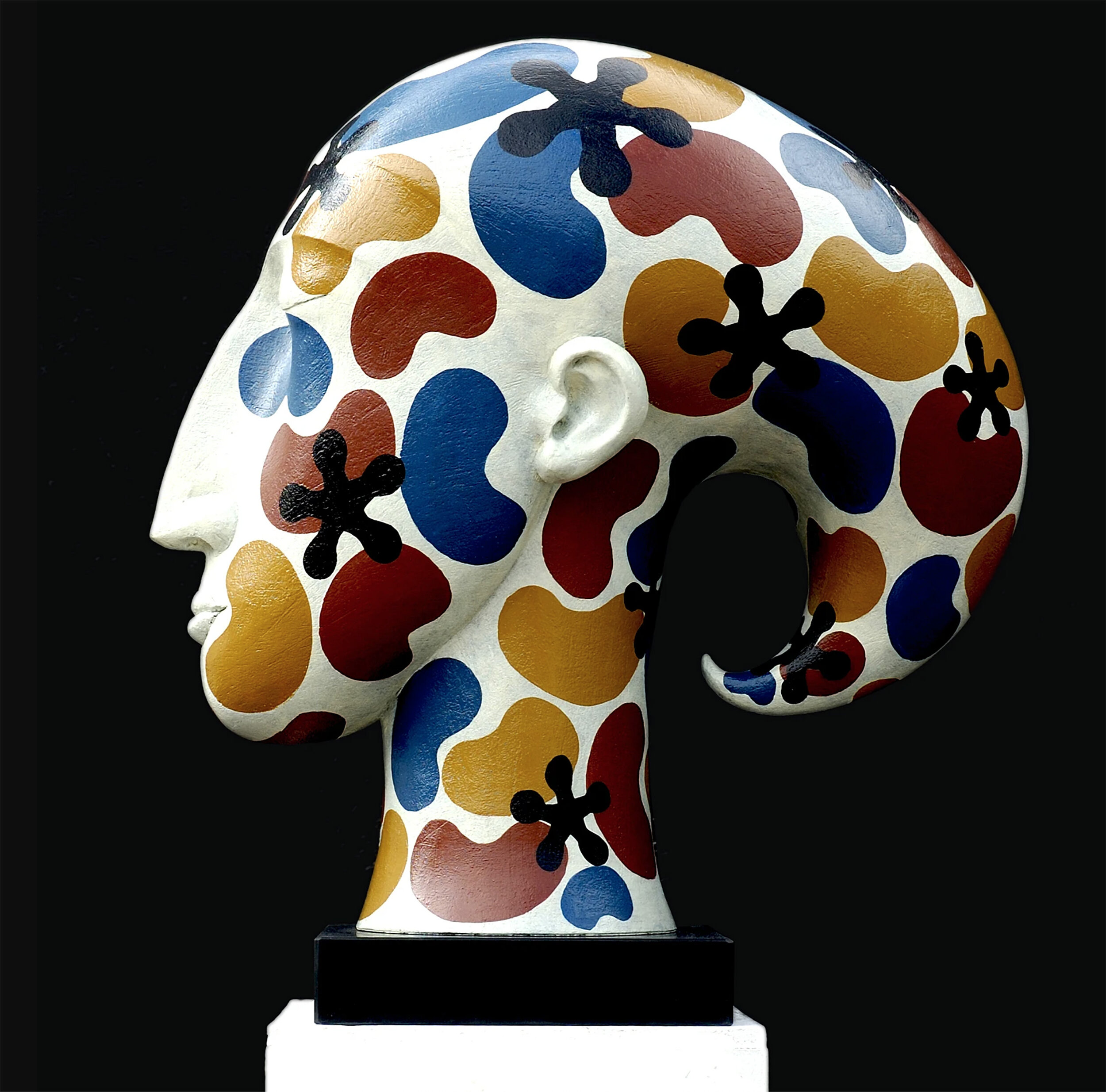Q&A | OCT 2020
Patricia Volk RWA
Not many ceramicists have had their work seen by millions. Patricia has. And it’s not just the public that like her work; collectors, gallerists and the art establishment revere her sculptures too.
Surprisingly, she hasn’t always been an artist, in fact for twenty years she hadn’t even picked up a pencil. But a burning desire to be an artist, led her to study at Middlesex and Bath Spa University completing a degree in ceramics. She’s now a fellow of the Royal Society of Sculptors and an Academician at the prestigious RWA.
I think this is one reason the arts is not fully appreciated. People don’t realise it occupies our thoughts 24/7
Why is ‘making’ important to you?
As a sculptor who works in ceramics, it’s more than just ‘making’ to me. It is creating something that is unique that hasn’t been done before. I work in clay because of the tactile quality of the material. It is a difficult medium that needs perseverance and I like the challenge that brings.
What or who inspires you?
I’m particularly excited by the work of sculptors Jun Kaneko, Ken Price, Betty Woodman and Ron Nagle – also Eduardo Chillida very much at the moment – but everything inspires my work. Even something as small as seeing one colour juxtaposed with another. I think this is one reason the arts is not fully appreciated. People don’t realise it occupies our thoughts 24/7. Everything we look at has decisions behind it whether it is a newspaper page or a building. Even the landscape has been cultivated for hundreds of years, but we are largely ignorant of that process. Artists should always been engaged with what is going on around them in terms of space, form and ideas. Even if a lot of those things come out subconsciously.
How do you come up with your best ideas?
For me, work is the best way to get ideas. I never sit and wait for the muse to strike. The flow of getting to work with my hands is all important. That tells me what the sculpture will be and what it is about. I don’t have any pre-designed notion of what it is. It just emerges through my relationship with the material.
What are you most proud of?
I’m very proud of getting the commission to do the ITV on screen “ident” as part of the prestigious “ITV Creates” initiative last year. It was wonderful to be chosen, and incredibly exciting to see my work filmed by a creative team who then put it on air, to be seen by millions of people all over the UK, most of whom would probably never venture inside an art gallery. It was also the springboard for a whole new series of sculptures in the form of knots and embraces, which gave me a new lease of life.
Just out of your depth, on the edge of fear, that is when the interesting stuff happens
How important is risk taking and failure?
To be honest, it is all risk if you are in a creative profession. Every day working as an artist you are rolling the dice, wondering if this thing you are making will be of interest to anyone. Of course, you have to put those thought to one side when you make something, and you have to fight feelings of self-doubt all the time. That’s why the cliché of artists being arrogant exists: if we didn’t have an element of arrogance we wouldn’t do it at all. But I do think that pushing yourself beyond what you think you can do always yields results. David Bowie said that when you go out in the swimming pool and you are on tip toes, just out of your depth, on the edge of fear, that is when the interesting stuff happens.
What do you enjoy most about making?
I love it when you go out and about and see your work beautifully displayed, but most of all I enjoy the time when you get completely lost in it in the studio and nothing else matters. None of the outside world exists, and you stand back and look at it at some point in the afternoon, with the light coming in through the window in a certain direction, and you allow yourself to think for a second or two: “That’s all right, that is.”
Best piece of advice you’ve received?
Don’t be cynical about the art business, remember what you are committed to in terms of your practice, and fight for what you want, while remaining professional (even if other people aren’t).
What themes do you see emerging in the making world?
People being aware of ecology is an important development. In the future people will be more aware of what they want and don’t want cluttering the world, but people will always need beautiful objects which will give them a sense of contemplation.
How do you keep it fresh?
The new skills come from wanting to push my work into new areas, and I’m always thinking of how to expand that. I never want to sit still. The forms are always developing. For one thing, they have to, to keep me interested. I could never produce the same thing over and over again. Every piece is an individual.
Advice to your younger self?
Don’t take no for an answer, and don’t be put off by the negativity of other people.










